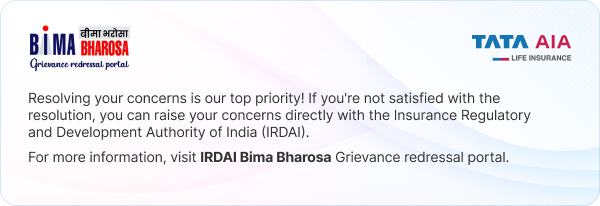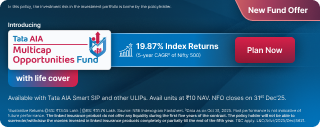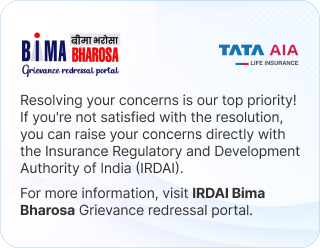What is the new tax regime?
The new personal income tax regime introduced in the 2020 Union Budget is applicable to individual taxpayers in 2023. The new tax regime has reduced the prevailing tax rates, but some of the crucial deductions and exemptions allowed under the previous regime are no longer available.
The tax slabs for the new income tax regime have been adjusted in Budget 2023 as follows:
Individuals with an income of up to ₹3 Lakh will not be taxed. Those with an income above ₹3 Lakh and up to ₹5 Lakh will be taxed at a rate of 5 per cent.
Those earning an income of above ₹6 Lakh and up to ₹9 Lakh will be taxed at a rate of 10 per cent.
Those earning income above 9 Lakh up to 12 Lakh will be taxed at a rate of 15 per cent.
An income of more than ₹12 Lakh and up to ₹15 Lakh will be taxed at a rate of 20 per cent.
Individuals with a taxable income exceeding Rs 15 Lakh will be taxed at a rate of 30 per cent.
But fret not if you depend on the standard deductions to reduce your tax burden. The new tax regime will co-exist with the old regime, and taxpayers can choose one based on their income, nature and extent of investments and financial goals.
In 2023, which tax regime can help you save more? If you are looking for the answer, you need to know the available reliefs in the old and new tax regimes. Read on to understand the exclusions and benefits of the new taxation system and make an informed choice.
Which deductions are allowed in the new tax regime?

Let us look at the standard deductions / exemptions available in the new tax regime:
Employers’ contribution to your National Pension Scheme (NPS)/ Employee’s Provident Fund (EPF) account: Exemption applies to a maximum contribution of ₹7.5 Lakh per year for all such pension accounts.
Amount withdrawn from NPS: You can withdraw up to 60% of your NPS account balance at maturity without having to pay tax. Partial withdrawals of up to 25% of your self-contribution are also tax-free.
Interest earned from EPF: If the interest generated in a year from your EPF does not exceed 9.5%, it will not get taxed.
Gratuity: If you receive gratuity from your employer, you can avail of exemptions on it up to a specified limit. Gratuity paid on the death of an employee is fully exempt.
Interest on post-office savings account: You can claim relief on a defined percentage of your post-office savings account interest.
Life insurance maturity benefit: Although the life insurance premiums are not eligible for deductions, the amount received at maturity is tax*-exempt under Section 10(10D).
Leave encashment: When you retire, you can encash the leaves you were entitled to but did not take during your work life. This income is not taxable up to a limit of ₹3 Lakh for non-government employees.
Voluntary Retirement Scheme (VRS) payment: If you retire voluntarily, then up to ₹5 Lakh received from your employer as benefits will not be taxed.
Public Provident Fund (PPF) and Sukanya Samriddhi Account earnings: The interests earned and maturity amounts received from your PPF account and Sukanya Samriddhi Yojana scheme is tax-exempt.
Allowances for official duties: The permissible deductions include:
a) Transport allowances for specially-abled individuals
b) Allowance to cover transportation costs for official purposes
c) Compensations for travel expenses on office tours or transfer
d) Daily allowances for “ordinary regular charges” or expenses for office duties at a location away from your regular workplace
What are the benefits of the new tax regime?
The government introduced the new tax regime to reduce the Indian taxpayers’ tax burden. This new system simplified the tax laws, removing the complicated calculations of deduction percentages.
Often taxpayers have to lock up their earnings in tax-saving instruments to avoid heavy taxation. Often, such investments happen at the last moment when the financial year is about to end. Not much thought goes into the monetary benefits or wealth creation for long-term goals.
Thus, your finances remain blocked, and yet you fall short of funds for your aspirations.
The new concessional regime helps you save on taxes without such instruments.
How to choose between the old and new tax regime?
For income tax calculations on your FY2021-22 earnings, you can select either of the two tax regimes. But for efficient tax planning, you need to analyse the old vs new tax regime and decide which one works better for your financial situation.
Consider the following parameters:
The exemptions you currently avail: If you earn a salary, your income may include:
House Rent Allowance (HRA) if you live in a rented accommodation
Food coupons
Compensation for phone bills
Leave allowance (LTA)
You will lose the exemptions on these under the new regime.
The deductions you already claim: A salaried individual is automatically eligible for ₹50,000 standard deduction and EPF contribution relief. The new taxation rules exclude these.
Moreover, you cannot claim deductions for:
Home loan EMI for self-occupied property
80C investments – life insurance premiums, ULIP premiums, NPS investments, ELSS investments, etc.
80D investments – health insurance premiums, health insurance riders#, etc.
You need to find out the total amount of such exemptions and deductions you avail. Subtract it from your income and calculate the tax payable under the old regime.
Next, compute what your taxable income will be without claiming such benefits. Find out the tax payable as per the new tax slabs.
Compare the two amounts to make your selection. Also, you can use the income tax department’s tax comparison tool available on their official website.
However, your investments should never be based solely on tax savings. You must think of your family’s financial security in case of an unfortunate event. Also, you need to create enough funds for life’s milestone events, such as:
Children’s college admission
Weddings
Retirement
Hence, you should select investment plans that enable you to amass the corpus for such life goals.
Should I buy life insurance under the new tax regime?
Yes, a life insurance policy is necessary, irrespective of which tax* regime you choose. This is because life insurance benefits protect your family in different situations and emergencies. Be it the death benefits or the maturity benefits of your life insurance policy, your financial goals and your family’s future financial security can be easily taken care of by your life insurance policy. However, it is important to ensure that the coverage you select should be adequate for all of their needs.
However, under the old tax regime, it is possible to claim tax* deductions on life insurance premiums. Since the old tax regime allows for Section 80C deductions on investments, you can also claim a tax deduction of up to ₹1.5 Lakh per year. This can be done when you are filing your income tax returns each year. While this tax deduction on life insurance premiums is one of the few reasons why people buy life insurance, it should not be the primary or sole reason for getting life insurance coverage.
The same tax benefit will not apply to your life insurance premiums if you opt for the new tax regime.
The older tax regime is appropriate for those who already have life insurance policies and have been claiming tax* deductions on the premiums over the years. For such taxpayers, these tax deductions translate into greater savings on their life insurance policy.
While you should certainly aim to get adequate life insurance coverage and also save tax on your policy, ensure that you choose the tax* regime only as per your convenience.
Tata AIA offers several savings solutions that serve this purpose. The plans and their hallmark features include:
Tata AIA Life Guaranteed3 Return Insurance Plan - An Individual, Non-Linked, Non-Participating, Life Insurance Savings Plan (UIN:110N152V11)
Choice of three plans – endowment, whole life income, and regular income
Assured payouts, keeping your money secure
Guaranteed3 additions to increase your profits
Tata AIA Life Insurance Fortune Guarantee7 Plus - A Non-Linked, Non-Participating, Individual Life Insurance Savings Plan (UIN: 110N158V09)
Choice of income plans
Tata AIA Life Insurance Guaranteed4 Monthly Income Plan - A Non-Linked, Non-Participating Individual Life Insurance Savings Plan (UIN: 110N147V02)
Guaranteed4 monthly income for double the policy tenure
Option for a premium boost to enhance your corpus
Tata AIA Life Insurance Diamond Savings Plan - A Non-Linked, Participating Individual Life Insurance Savings Plan (UIN: 110N133V02)
Guaranteed5 income during policy term
Possibility for additional gains with bonuses2
Tata AIA Life Insurance Gold Income Plan - A Non-Linked, Non-Participating, Individual Life Insurance Savings Plan (UIN: 110N131V02)
Guaranteed6 income starting 12% of the sum assured
Increasing income during income term with more premiums
Conclusion
Your taxation regime selection should take into account possible savings under each system. But your life insurance selection should not depend on tax savings. Choose a savings-linked insurance product, protect your family’s finances against unforeseen events, and meet your life goals.
3T&C Apply| 4T&C Apply| 7T&C Apply|6T&C Apply|5T&C Apply
L&C/Advt/2023/Mar/1069











 FOR EXISTING POLICY
FOR EXISTING POLICY 
 FOR NEW POLICY
FOR NEW POLICY 








